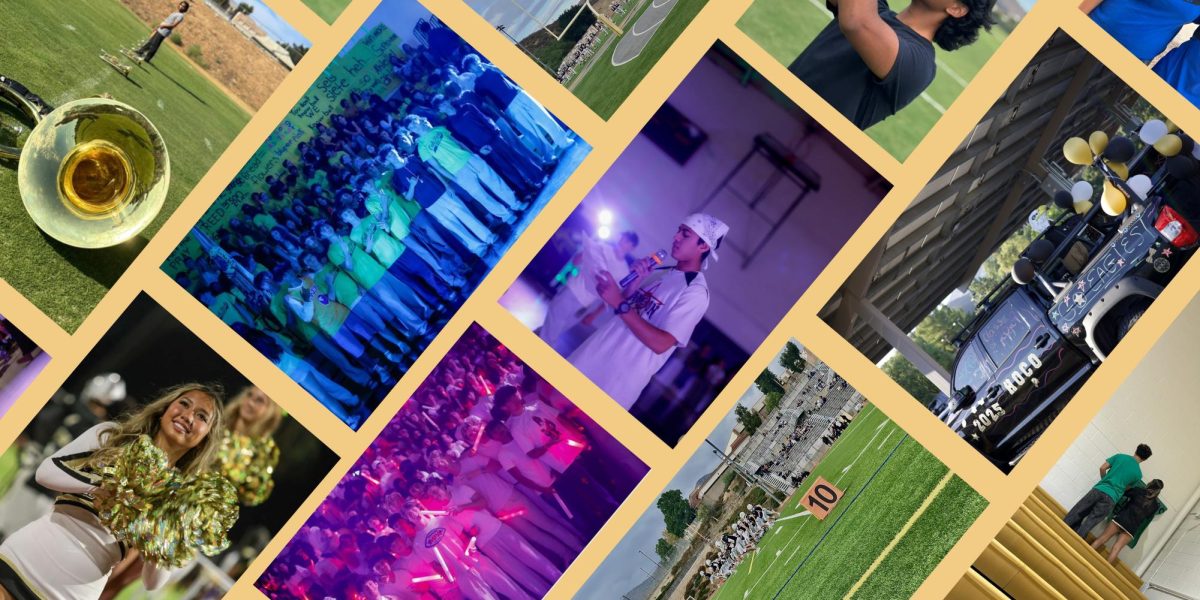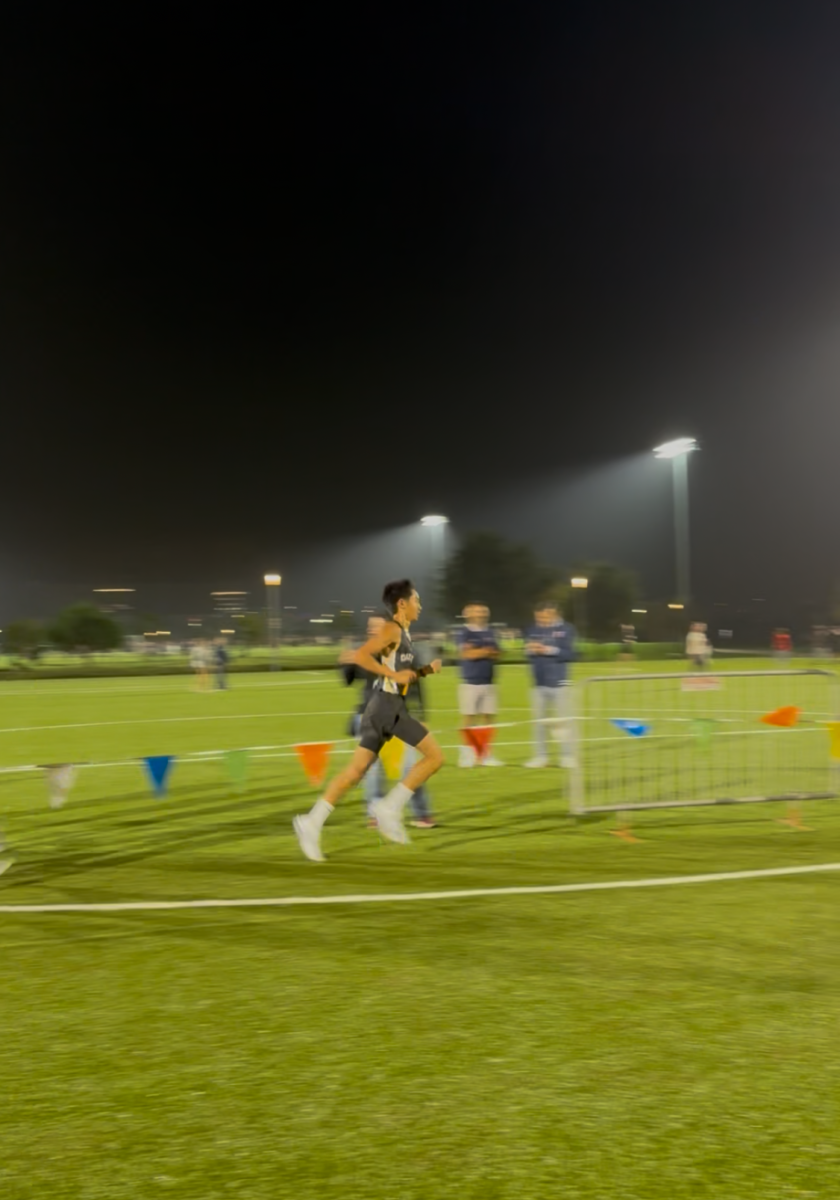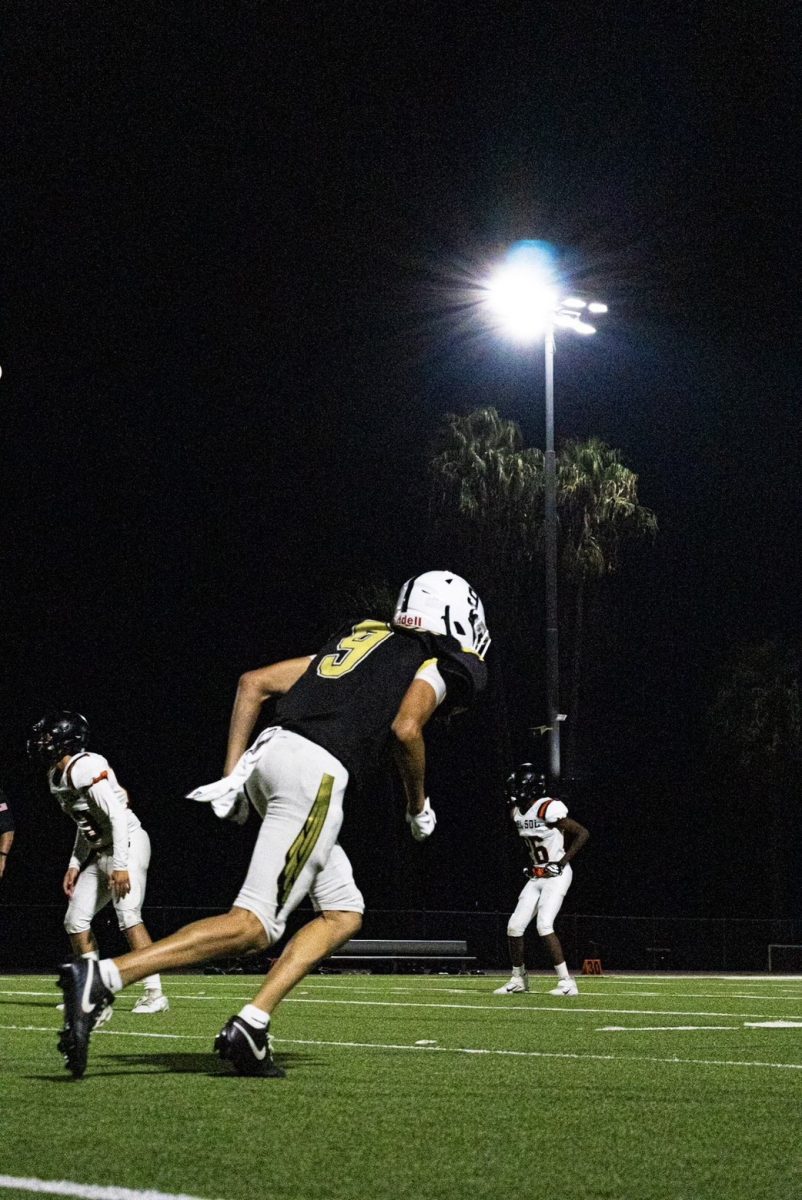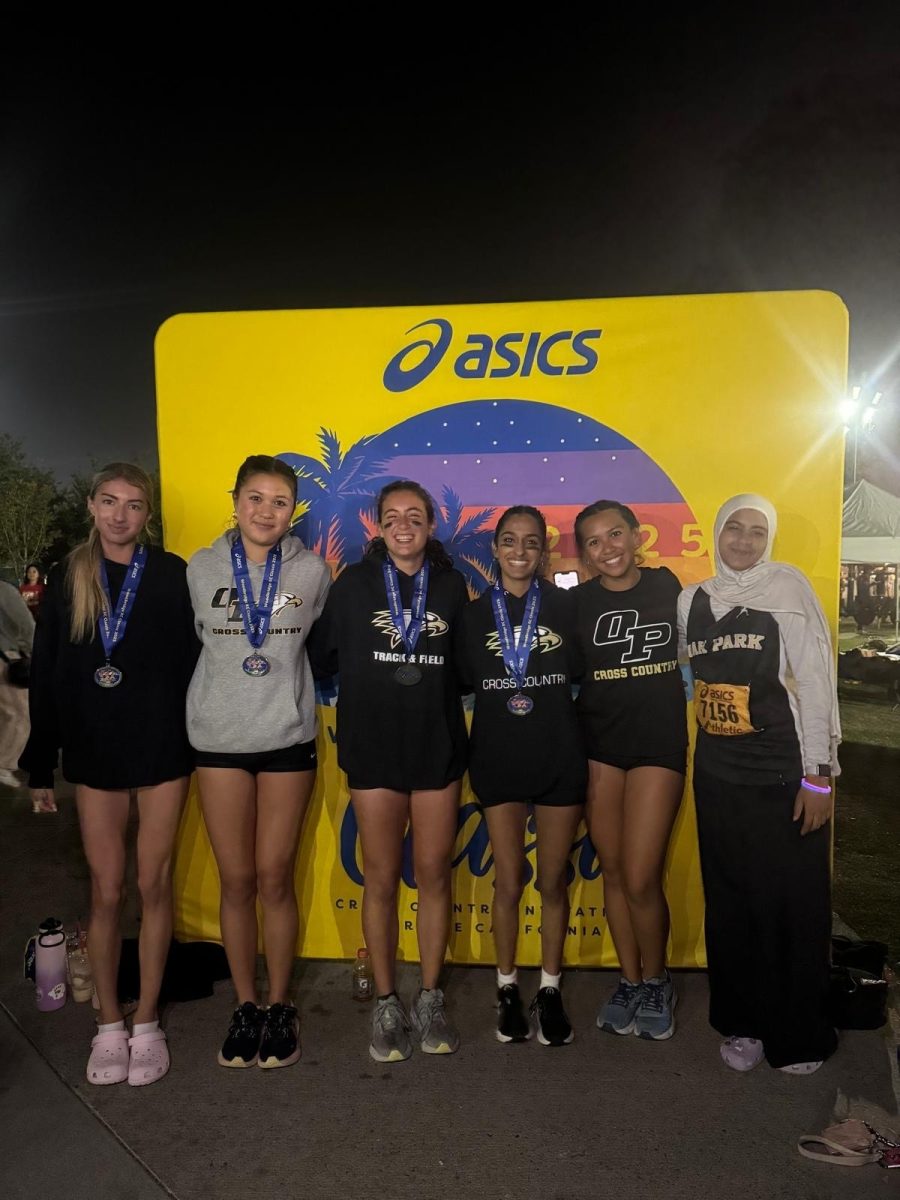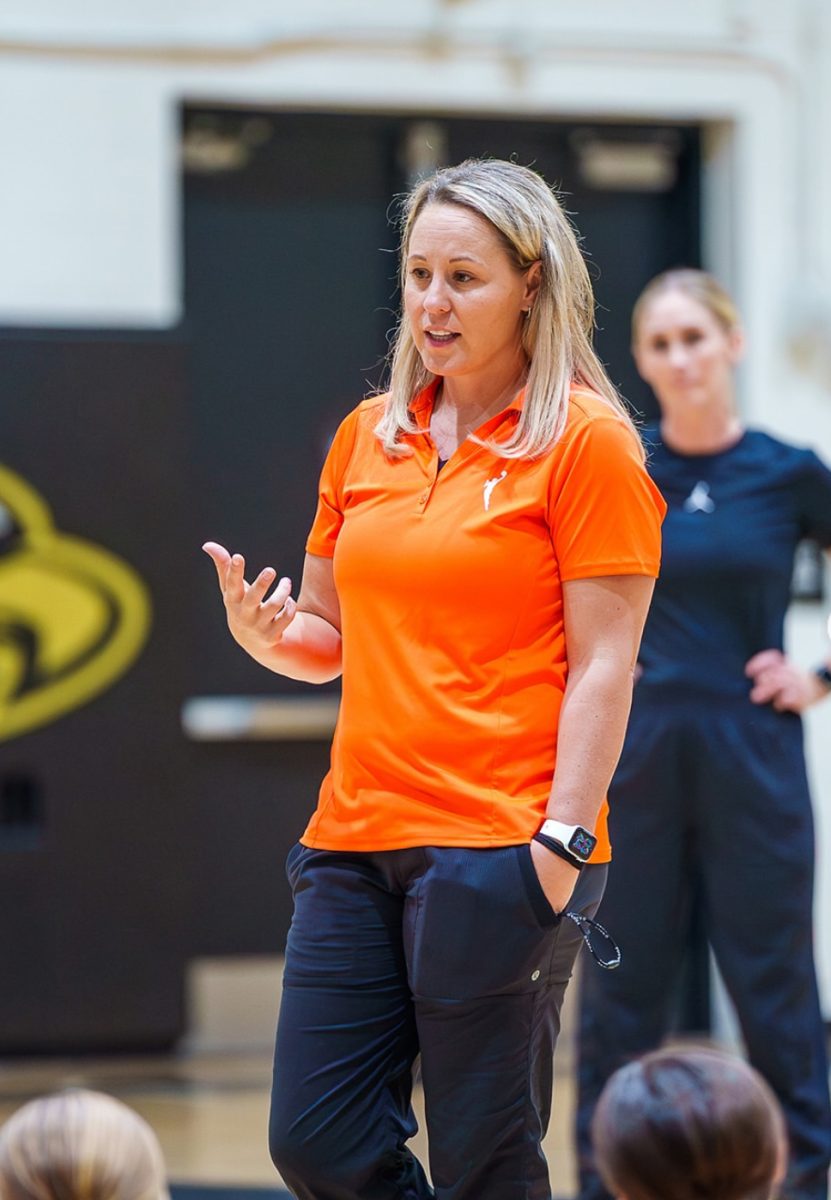In 1964, a company called Seiko developed a timing mechanism for track and field that accurately calculated finishes down to the second. In 1980, tennis players stopped using wooden rackets and moved to using graphite ones for enhanced performance. In 2012, athletic clothing manufacturers created products that actively tracked the athlete’s performance by measuring things like heart rate, posture, speed and more. Here, in 2025, technology in sports is more developed than ever. Professional runners have super shoes, football players have AI trainers and athletics are generally more advanced than ever before.
While high school athletes may not always have access to the latest and greatest technology used in professional leagues, they still have opportunities to take advantage of the modern era. Almost all sports at Oak Park High School—if not all of them—use some sort of technology to train and improve. While the uses vary across different sports, the impact is felt all the same.
“Wearables (watches and heart rate monitors) have made tracking miles, paces, effort and heart rate much easier than ever before,” OPHS cross country coach Steven White wrote to The Talon. “I can tell when athletes are working too hard or not hard enough because we can look at watch readings and get good info from that.”
Running watches have made a huge impact on the sport in general. Big brands such as GARMIN or Coros design watches that implicate special tracking mechanisms designed to streamline performance. The information presented on these wearables are crucial for White when helping design workouts for everyone on the team.
“We can adjust mid-practice if need be,” White said. “I can use that info to plan the next workouts and differentiate for each of the athletes.”
As a former athlete himself, White understands that technology cannot completely override the need for human guidance for his athletes. Running is just as much about feel as it is about pacing and heart rate.
“All the info from the watches and wearables has to be taken with a grain of salt,” White wrote. “That’s where my experience as an athlete and coach comes in. I will often override the data and go more with a gut feeling, but those occasions are becoming less frequent as tech improves. It is fun to balance out the data and what my eye sees.”
While cross country relies heavily on tracking metrics related to athlete health and breathing, golf is adding new technology to the facets of the sport itself. Updates to the clubs and the golf balls have largely advanced the level to which athletes can perform. However, OPHS golf head coach Donn James believes that the biggest innovation lies elsewhere.
“While the technology advances in golf balls, the new metals and carbons in shafts and clubheads have taken the game to a new level,” James wrote. “The biggest change to instruction is the addition of the iPhone camera. Filming a player’s swing provides instant feedback during any training session. No longer do I have to twist and rearrange body parts to explain their problem, as we can view the video of their swing, and make corrections based on that.”
Visual feedback in golf training is one the most revolutionary techniques developed for the sport. Professional athletes around the world frequently take advantage of the quick and easy way to fix issues with certain stances and body parts. James also believes that technology has helped advance the game itself during matches.
“In addition, the advent of electronic scoring adds another duty for the player to complete during a match,” James wrote. “While another duty for them, it also allows them to see how they are doing relative to the other players in the field.”
Golf isn’t the only sport using recordings to make improvements. OPHS girls basketball head coach April Schilling has her team watch their own film and both NBA and WNBA highlights to notice nuances they can fix or add to their games. As a former professional player herself, Schillings knows firsthand the importance of using whatever new technology is available.
“We use a laser dribble machine that tracks the efficiency and speed of every player’s ballhandling,” Schilling wrote. “Many NBA teams and major colleges and universities use this machine to help give them the edge.”
On top of that, Schillings also uses technology to help her set her team lineup and help her players with recruiting.
“I use a system called Cerebro Sports and Synergy to measure the efficiency rate of different players,” Schilling wrote. “It is a great system to identify and project where a player might play in the future. It is also fantastic in roster formation and understanding the strengths of your team and the challenges.”
OPHS cheer head coach Mara Smialek also uses videos, yet in a different way from the aforementioned sports.
“When I think about ‘Tech in Sports,’ the first tool that has made a big impact for my team would have to be TikTok or Instagram,” Smialek wrote. “With the use of both of these platforms, we are able to piece together several different ideas for our dances and our stunts. Both of these platforms have made it easy for us to share these ideas, as well as build upon them to make them unique to our team.”
Social media platforms like TikTok and Instagram are home to millions of creative videos. Among these, Smialek has been able to choose a select few for her team to perform. However, while the team may have access to these plethora of platforms, Smialek doesn’t let it override her personal experiences.
“The way I handle balancing data insight with my own personal coaching experience is that I use what I observe through certain technology platforms to help me understand and see what we need to do to improve on our specific performance aspects or to help us get closer to meeting the goals we’ve set for the season,” Smialek wrote. “I truly feel like using the technology we have available to us has only helped grow our program because we are able to see a vast spectrum of skill levels and abilities and how we need to improve to be able to stay relevant and ‘in the cheer game’ by leveling up our skills and pushing to gain higher level stunting techniques.“
While also implementing new technology and using social media, OPHS boys lacrosse head coach Kevin Doohan believes that the most impactful technology is quite simple.
“It might sound boring, but the scheduling and messaging platforms are probably the first tool that made a big impact. So many events happen over the course of a season and a year and so many changes to schedules happen, often with short notice,” Doohan wrote. “Tools like ParentSquare and TeamSnap make getting the word out very easy for me and for the generous parents who volunteer their time to help the team.”
This increased ability to communicate has also helped Doohan in other ways besides just being able to reach out to athletes and parents.
“Communication with my players helps me ‘see why’ it happened,” Doohan wrote. “For example, when a play goes wrong, did the player read the situation correctly and make a mistake? Or did he misread the situation and act correctly based on the misread? Depending on which thing happened, the coaching feedback I share will be very different.”
Big platforms have been established in the professional sports world to help athletes improve. Perhaps the most impactful on the high school scene is hudl.com. HUDL has film for all sports, yet is mostly used for football.
“HUDL has a huge impact on our team,” OPHS football head coach Casey Webb said. “That is where we can watch films and break it down.”
Clearly, all sports at OPHS do their best to stay current and use the best available technology; at least, the best for now. With the progression of technology moving at the pace it is, don’t be surprised if our very own coaches are standing on the sidelines wearing goggles that actively analyze plays as they occur. It’s bound to happen.




